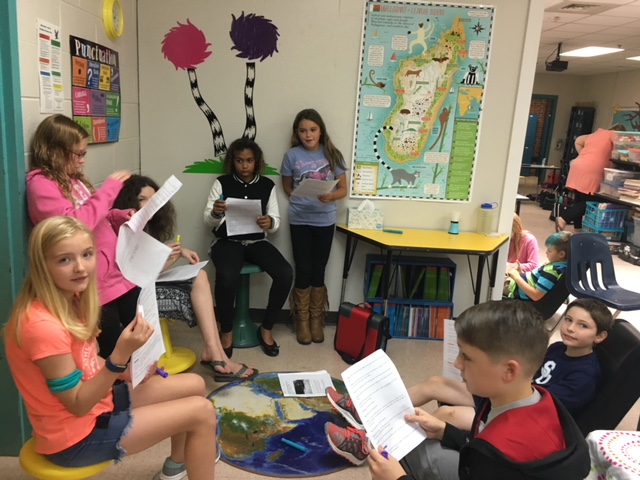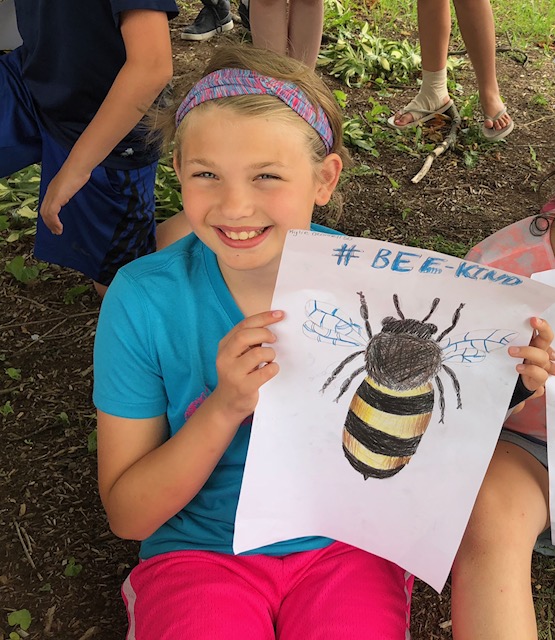
Your classroom culture combines three environmental elements: physical, social/emotional, and learning. Each element is intertwined, interrelated, and interdependent, similar to an ecosystem. In Part 1 of this series, we described the importance of your classroom physical environment: layout, colors, lighting, smell, and more.
Social/Emotional and Learning environments are equally significant to a healthy, student-centered classroom. Like a robust rainforest understory, and within the canopy of your classroom culture, students will emerge as self-reliant, confident learners.
Social/Emotional Environment
Classroom culture is the support your students need to feel safe to take chances, and will be the bridge to guide them through challenges. Social and Emotional Intelligence is vital for learners to adapt to the increasingly diverse world of demands thrust upon them in learning and life situations. Instructing, modeling, practicing, and encouraging Social and Emotional Learning (SEL) is now considered best practices. Start slowly by introducing one concept, laying one bridge at a time.
Supporting your Understory of Students
The benefits of integrating a responsive social/emotional environment are myriad:
- Positive Social Behavior
- Self-Awareness and Self-Regulation
- Conflict Resolution Capabilities
- Improved Academic Achievement
- Decreased Anxiety and Stress
- Cooperative and Collaboration Skills
 To stretch the reach of social/emotional learning, practices should be seeded into your daily routine; they are part of the foliage of your rainforest:
To stretch the reach of social/emotional learning, practices should be seeded into your daily routine; they are part of the foliage of your rainforest:
- Greet students at the door with a smile and hello; this models manners and social graces.
- Establish daily routines: read alouds, morning meetings, and bellwork; this allows practice for listening skills, sharing time, and time management.
- Generate a class-created Behavior Expectation Chart on being Responsible and Respectful; this will engage student ownership of behaviors.
- Discuss and post certain non-negotiables such as name-calling, touching others, and safety issues; this provides boundaries and expectations that make students feel safe.
- Integrate Outdoor Classroom Day; students benefit from the change of environment and connecting with nature.
- Tie in Service Learning; by doing so, you are modeling and encouraging empathy and character development.
- Mix in Mindfulness; simple exercises such as breathing, tapping, or doodling will contribute to increased self-regulation.
- Incorporate Picture Book Read-alouds; this will open the door for indirect discussions on emotions and character development.
- PLAY, PLAY, PLAY; through guided, independent, and role play, social and emotional skills are developed: turn taking, listening, compromising, sharing, and problem solving.
Learning Environment
Classroom culture will fortify students to grow beyond the canopy, into the emergent layer.
The emergent layer of the rainforest comprises the tallest trees, reaching higher, resistant to the hot sun and elements. Most animals living in the emergent layer have wings. Your learning environment is the third part of your canopy of classroom culture, and with a growth mindset, student ownership, and study skills your students will spread their wings to fly.
Inspiring Growth Mindset
A growth mindset can be the difference between withering or flourishing; try sprinkling your conversations with dynamic dialogue.
 I begin my year by giving two copies of growth mindset phrases to students; one for their binder and one for home. We spend a class discussing growth mindset and how adopting one can be helpful. We repeat each of the phrases, accentuating how to take a challenging situation and make it manageable. When a student struggles, making a non-productive comment, we chime in with the Growth Mindset phrase. Our most impactful daily reminder is our, ‘Let It Grow’ tree bulletin board, filled with alternatives to negative self-talk.
I begin my year by giving two copies of growth mindset phrases to students; one for their binder and one for home. We spend a class discussing growth mindset and how adopting one can be helpful. We repeat each of the phrases, accentuating how to take a challenging situation and make it manageable. When a student struggles, making a non-productive comment, we chime in with the Growth Mindset phrase. Our most impactful daily reminder is our, ‘Let It Grow’ tree bulletin board, filled with alternatives to negative self-talk.
Students who ‘Own it”, Thrive
When students have a voice in their learning; the sky’s the limit. Begin the year by establishing clear, concise academic expectations, integrating student feedback and self-reflection in the process. These tasks may seem daunting, but once established are not only beneficial for student growth, but may lessen your load a little as well.
- Engage students in a Personalized Learning Assessment to identify their strengths and weaknesses and create goals.
- Discuss, create, and post anchor charts of expectations for quality assignments, with non-negotiables mentioned.
- Have students assist in creating rubrics for assignments; this helps with the learning process.
- Incorporate student-led conferences at least once during the year; these helps students develop metacognition and goal-setting skills.
- Provide exemplars of assignments: the good, the bad, and the ugly. Use self and peer reviewing and assessing frequently
Self-sufficiency thru Study Skills
Study skill lessons can help students reach a higher degree of agency, being more initiation-driven and proactive learners.
Try including instruction on a skill a week. Instruct, model, and practice. In a few week, have students teach each other a skill! Here are a few skills that may take priority:
- Time Management
- Problem-Solving
- Listening Skills
- Organization
- Managing Distractions
- Test-Taking Skills
A Complete Canopy
A lush classroom culture will help students to develop a sense of ownership, connectedness, and awareness of their learning. Like the rainforest canopy, your three areas of classroom culture environment, physical, social and emotional, and learning join together, building a sturdy roof over the layers below, creating the perfect conditions for dense, emergent learner growth.